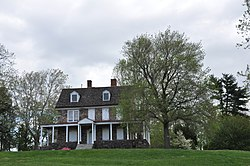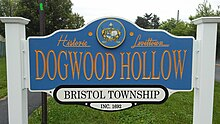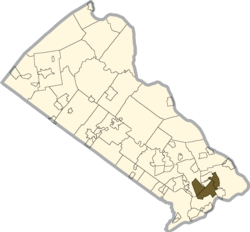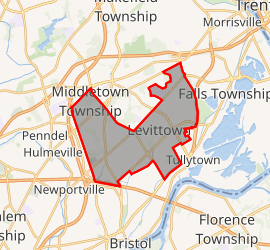
Levittown Public Adjuster Home Claim Help
SAVE MONEY CALL NOW!!!
(215) 364-4546
No Settlement | No Fee | No Obligations
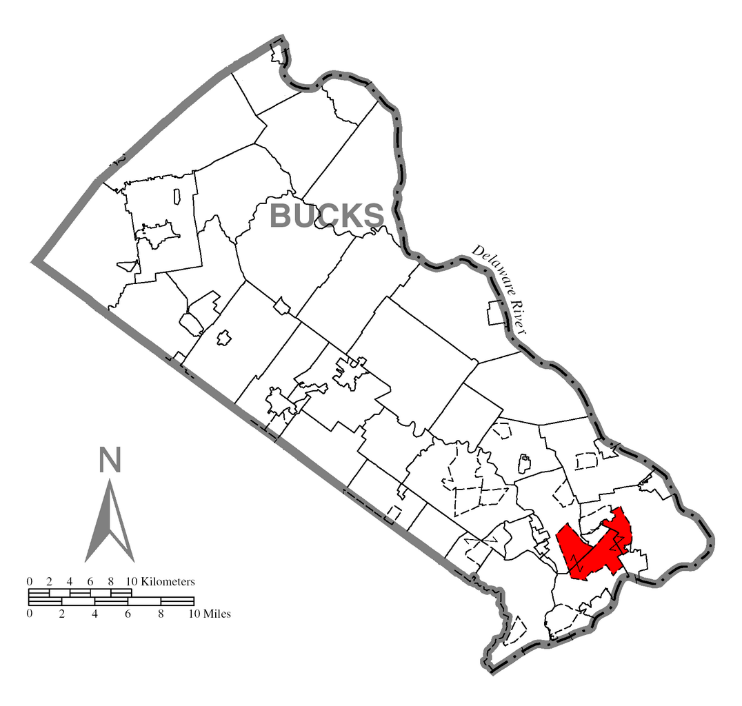
Levittown Public Adjuster is Advocate Public Adjustment.
Our contingency fees are very competitive. Starting as low as 5% – 20 % that larger public adjusting firms find it hard to compete against.
We maximize your home claim settlement while saving you money. In addition, we offer great home claims service, return phone calls, and are only a phone call away.
We are your Levittown Public Adjuster, and at Advocate Public Adjustment our mission is to make sure the insurance company pays you enough money to rebuild any and all property damage sustained to your home or business while providing the highest level of professional public adjustment services.
Our claims staff will work to protect home owners and business owners manage their claims, and fully document their losses in order to maximize their financial interest in all insurance claim settlement returns.
Our goal is to reduce the emotional and financial burden placed upon you per the insurance policy contract as the result of a direct physical loss.
We know the insurance claim process!
Levittown Public Adjuster Insurance Claim Settlement Services
Levittown Public Adjuster Advocate Public Adjustment, LLC is dedicated to addressing all of your property damage home and business insurance claim needs as your public adjuster. Each property loss or insurance claim is unique and your Levittown Public Adjuster Advocate Public Adjustment, will work diligently to determine the extent and amount of your loss.
Below is a listing and description of the varied services that we offer.
Free Policy Review…no obligation
Let us review your insurance policy for FREE. Many times, individuals or business owners do not carry appropriate insurance coverage. Advocate Public Adjustment IS your Levittown Public Adjuster and we want to inform you about your specific policy making sure you understand if you not properly insured to value before it is too late. FINDING OUT AFTER A LOSS OCCURS IS TOO LATE.
Advocate Public Adjustment your Levittown Public Adjuster who takes control of the entire Home Claims Management process.
Advocate Public Adjustment, LLC takes charge quickly and ensures that you are protected during your time of need. Our experienced, professional advocate public adjuster home claims staff will manage every aspect of the property damage insurance claim.
Advocate Public Adjustment, will be available anytime, to give you the peace of mind that you deserve. There is no claim too large or too small. We have negotiated thousands of claims for Pennsylvania residents and business owners since 1992.
Whether it’s home fire damage, home smoke damage, home water damage, home lightning strike, home wind damage or any other natural catastrophic disaster, such as hurricane damage, flood damage, tornado damage, or severe winter storms, we have the knowledge and insurance claim negotiation skills with experience to rebuild your property.
Advocate Public Adjustment the Levittown Public Adjuster, will immediately protect your property from further damage and provide emergency services in order to begin the restoration process. We will arrange for temporary housing solutions and secure emergency living funds to replace clothing, and or any other need that has developed from your loss. We are your Levittown Public Adjuster Advocate Public Adjuster, LLC.
Levittown Public Adjuster Insurance Claim Settlement Process
Advocate Public Adjustment will review the final settlement options with you for your home, business and or personal property.
We will make sure that you receive everything you need to maximum your insurance claim settlement as your Levittown Public Adjuster. We will prepare settlement documents for payment including business interruption, extra expense and business income claims (if applicable).
There are absolutely NO fees paid to Advocate Public Adjustment for our services by you, the insured. No out-of-pocket cost for our intervention protecting your assets as we handle every detail for a FANTASTIC Contingency Fee starting as low as 5% – 20% Maximum. (Depends on the circumstances) as to what kind of claim we are talking about.
Levittown
Entrance sign to Dogwood Hollow development, erected May 2018. | |
Location of Levittown in Bucks County | |
Levittown Location of Levittown in Pennsylvania Show map of Pennsylvania Show map of the United States Show all | |
Coordinates: 40°09′15″N 74°50′59″W | |
country | United States |
state | Pennsylvania |
County | |
Area | |
• Total | 10.40 sq mi (26.94 km2) |
• Land | 10.30 sq mi (26.68 km2) |
• Water | 0.10 sq mi (0.26 km2) |
Elevation | 30 ft (9 m) |
Population | |
• Total | 52,699 |
• Density | 5,116.41/sq mi (1,975.38/km2) |
• Summer (DST) | |
19054–19055 and 19057–19058 | |
42-42928 | |
| |
| |
Designated | August 8, 2017[3] |
Levittown is a census-designated place (CDP) and planned community in Bucks County, Pennsylvania, United States. It is part of the Philadelphia metropolitan area. The population was 52,699 at the 2020 census, down from 52,983 at the 2010 census.[4]
Levittown is 40 feet (12 m) above sea level. Though not a municipality, it is sometimes recognized as the largest suburb of Philadelphia[5] while Upper Darby, Lower Merion, Bensalem, Abington, and Bristol townships are municipalities larger in size within the three surrounding Pennsylvania counties. Starting with land purchased in 1951, it was planned and built by Levitt & Sons. The brothers William Levitt and architect Alfred Levitt designed its six typical houses.
Levittown is located 72.5 miles (116.7 km) southeast of Allentown and 26.6 miles (42.8 km) northeast of Philadelphia.
History
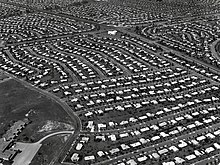 Aerial view of Levittown c. 1959
Aerial view of Levittown c. 1959
Most of the land on which Levittown is built was purchased in 1951.[6] Levitt and Sons only built six models of houses in Levittown, all single-family dwellings with lawns: the Levittowner, the Rancher, the Jubilee, the Pennsylvanian, the Colonial and the Country Clubber, with only modest exterior variations within each model. The homes were moderately priced and required only a low down payment.
Construction of Levittown began in February 1952, soon after completion of Levittown, New York, located on Long Island. Levittown, Pennsylvania, was the second “Levittown” built by William J. Levitt, who is often credited as the creator of the modern American suburb.[7][8][9]
To speed up construction, Levitt & Sons perfected a 26-step rationalized building method that was essentially an assembly line type of home building.[10] The house remained stationary while construction workers moved from site to site, each repeatedly performing a task such as pouring foundations, putting up pre-fabricated walls, installing plumbing, or doing electrical work.[11] At peak production, this highly regimented process enabled Levitt’s workers to produce a finished house every sixteen minutes.[12] Construction of the homes commenced in 1952 and when completed in 1958, 17,311 homes had been built.[12]
What set Levittown apart from other developments at the time was that it was built as a complete community. Levitt & Sons designed neighborhoods with traffic-calming curvilinear roads, in which there were no four-way intersections. Each neighborhood had within its boundaries a site donated by Levitt & Sons for a public elementary school. Locations for churches and other public facilities were set aside on main thoroughfares such as the Levittown Parkway, likewise donated by the builder to religious groups and other organizations.
Other amenities included Olympic-sized public pools, parks, greenbelts, baseball fields and playgrounds, and a shopping center located in neighboring Tullytown borough that was considered large and modern at the time of its construction (and in fact was the largest east of the Mississippi). The first set of four sample homes were put on display in a swatch of land near the future Levittown Shop-a-Rama, and an estimated 30,000 people viewed them in that first weekend.[13]
Residents, who are sometimes called Levittowners, were first expected to comply with a lengthy list of rules and regulations regarding the upkeep of their homes and use of their property. Two of these “rules” included a prohibition on hanging laundry out to dry on Sunday and not allowing homeowners to fence off their yards. These proved unenforceable over time, particularly when backyard pools became financially accessible to the working class and privacy concerns drove many to fence off their yards.[14] In the years since Levitt & Sons ended construction, three- and four-story “garden apartments” and a number of non-Levitt owner-occupied houses have been built in Levittown.
William Levitt had a career-long commitment to a whites-only policy in their developments.[dubious – discuss] Levitt & Sons would not sell homes to African Americans. Levitt did not consider himself to be a racist, considering housing and racial relations entirely separate matters. Initially, the Federal Housing Administration (FHA) conditioned essential financing for this and similar projects on the restriction of home sales to those of “the Caucasian race“, as stipulated in housing rent and sales agreements and deed covenants.[15] This did not prevent Bea and Lew Wechsler, a Jewish couple from the Bronx, from connecting an African-American family to a neighbor who desired to sell his home. Levittown’s first Black couple, William and Daisy Myers, bought a home in the Dogwood Hollow section in 1957.[16] Their move to Levittown was marked with racist harassment and mob violence, which required intervention by state authorities.[17] This led to an injunction and criminal charges against the harassers while the Myerses and their supporters refused to surrender and received national acclaim for their efforts. For instance, Daisy Myers has been hailed as “The Rosa Parks of the North”,[18] who helped expose the northern states’ problems with racial inequality of that time. Daisy Myers later wrote a book about her family’s experiences.[19] She died Dec. 5, 2011, in York, Pa.[20] The NAACP and the ACLU opposed Levitt’s racist policies, and the Federal Housing Administration threatened to refuse mortgages on his next Levittown. Levitt still refused to sell to blacks, and developed plans for yet another whites-only Levittown—this one to be in Willingboro Township, N.J.—while fighting legal challenges in New Jersey courts. Ultimately the U.S. Supreme Court refused to hear his case.[21]
The community’s otherwise placid exterior was again disturbed during the so-called suburban gas riots of June 1979 in the wake of the Camp David Peace Accords, which resulted in a second embargo by Arab oil-producing nations. The unrest occurred June 24–25, 1979, as lines swelled and tempers flared in the heart of Levittown at an intersection known as Five Points, a location then surrounded by six service stations, two of which were severely damaged by vandalism in the riots. The two days of riots made national headlines and were mentioned (although not directly by name) in the draft of an address to the nation that was to have been delivered by President Jimmy Carter on July 5, 1979.[22]
A baseball team from Levittown won the Little League World Series in 1960. Levittown American beat an opponent from Fort Worth, Texas, to win the honor.
Of the five public pools built by Levitt & Sons and operated by the Levittown Public Recreation Association (LPRA), four were closed[why?] in 2002, with the exception being one located in the Pinewood section. LPRA Headquarters (and other landmarks) of this prototypical post-war suburb of sometimes mythic importance have been the focus of historic preservation efforts. Since 2002, studies have been underway to establish the Levittown Historic District.
Since its inception in 1988, the Bucks County St. Patrick’s Day Parade has been held in Levittown. Every year, the parade steps off from St Joseph the Worker Church[needs update], and proceeds two miles (3 km) on New Falls Road to Conwell-Egan Catholic High School. St Joseph the Worker Church has since been torn down.
Municipalities and sections
- Appletree Hill
- Blue Ridge
- Crabtree Hollow
- Dogwood Hollow
- Farmbrook
- Golden Ridge
- Greenbrook
- Holly Hill
- Indian Creek
- Junewood
- Kenwood (small portion in Tullytown)
- Magnolia Hill (1 House in Falls Twp.)
- Mill Creek
- Oak Tree Hollow
- Orangewood
- Plumb Ridge
- Red Cedar Hill
- Stonybrook (small portion in Tullytown)
- Violetwood
- Whitewood
- Yellowood
- Birch Valley
- Elderberry Pond
- Lakeside (tiny portion)
- Magnolia Hill (1 house in Falls Twp.)
- North Park
- Pinewood
- Thornridge
- Vermillion Hill
- Willowood
- Cobalt Ridge
- Forsythia Gate
- Highland Park
- Juniper Hill
- Lower Orchard
- Quincy Hollow
- Red Rose Gate
- Snowball Gate
- Twin Oaks
- Upper Orchard
- Deep Dale East
- Deep Dale West
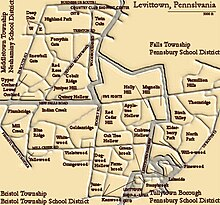
Map of the municipalities, school districts and original sections of Levittown; the thick gray lines are municipal borders.
Levittown is not an incorporated place, though efforts in the early 1950s were made to incorporate. Some Levittown residents feared that incorporation would lead to higher taxes, by robbing the prospective municipality of a commercial tax base.
Levittown Shop-a-Rama, the 1955 Levittown Shopping Center in Tullytown was a 60-acre L-shaped pedestrian mall at the edge rather than the center of Levittown,[23] with two strips of stores faced the 6,000-car parking lot with a courtyard that had green spaces, benches, and entrances to the stores.[23] The center’s largest, anchor department store (Pomeroys, which was acquired by Boscov’s) and other chain retailers such as Food Fair, Woolworth’s, JC Penney, Kresges, Yards, Lobel’s, W.T. Grant, Pep Boys, and Sears were Levitt-favored tenants.[23][24][25]
The shopping center began a slow decline in the mid-1970s from which it never recovered with the building of the Oxford Valley Mall. The mall, located just north of Levittown, in Langhorne in Middletown Township, drew shoppers away from the older Levittown facility, given Oxford Valley’s much larger size and enclosed shopping environment. In 2002, the redeveloped site of the Shop-a-rama was reopened as the Levittown Town Center. The completed facility contains 468,675 square feet (43,541.3 m2) of retail space.[26][27]
Levittown’s 41 neighborhoods[28] (locally called “sections”) are found in parts of four separate municipalities:
- Bristol Township(including the sections of Plumbridge, Mill Creek Falls, Indian Creek, Goldenridge, Blue Ridge, Whitewood, Orangewood, Yellowood, Violetwood, Red Cedar Hill, Apple Tree Hill, Holly Hill, Crabtree Hollow, Oaktree Hollow, Greenbrook, Farmbrook, Dogwood Hollow, Junewood, Magnolia Hill, and most of Kenwood and Stonybrook, and a small part of Birch Valley)
- Falls Township(including the sections of Vermilion Hill, Thornridge, Elderberry Pond, Willowood, North Park, as well as portions of Pinewood, Lakeside, most of Birch Valley and 1 house in Magnolia Hill)
- Middletown Township(including the sections of Deep Dale East, Deep Dale West, Highland Park, Twin Oaks, Forsythia Gate, Snowball Gate, Red Rose Gate, Upper Orchard, Lower Orchard, Juniper Hill, Cobalt Ridge and Quincy Hollow)
- Borough of Tullytown(including small portions of Stonybrook, Kenwood, Pinewood and Lakeside). These neighborhoods’ populations are counted by the U.S. Census Bureau as residing within Tullytown only, not the Levittown CDP.
The names of the streets within each section uniformly begin with the same letter that begins the name of the section in question except for the section of Green Lynne, which was not constructed by Bill Levitt. This plan offers a good clue as to where any particular street might be located. “X” and “Z” are not used for section or street names. As there are more than 24 section names, “road” is used for street names in sections to the west of Edgely Road, “lane” is used in those section to the east. Sections are surrounded by a “drive” with the same name as the section. For example, the Pinewood section is circled by Pinewood Drive, while Snowball Gate is surrounded by Snowball Drive. Some sections have their drive broken into multiple parts, with similar names. Forsythia Gate has Forsythia Drive North and Forsythia Drive South.
Almost all other roads or lanes in the sections connect on one or both ends to the drive of that section. In some sections, such as Goldenridge, the shape of the section prevents the drive from surrounding the section, or allowing all roads in the section from connecting to the drive. The drives of adjacent sections, are frequently connected with small connector streets. In addition, small connector streets are used to connect the section drive with a nearby main thoroughfare. The names of these small connectors typically start with one of the letters from the adjacent sections, and tend to have a name reminiscent of their purpose or their location. Some examples: Learning Lane connects Lakeside and Pinewood, and borders Walt Disney Elementary School. Short Lane connects Stoneybrook and Farmbrook. Not all small connector streets are named.
Red Rose Gate, Forsythia Gate, and Snowball Gate are collectively known as “The Gates.” (These were the only sections without sidewalks so as to lend a more “executive” appearance to the neighborhoods.) Lakeside sits next to Levittown Lake. Thornridge has its upper half that sits on a ridge, that was found to have Thorn Bushes. Vermilion Hill is named after the color that the trees on its prominent hill turned in the Fall. Magnolia Hill is on a prominent hill. Mill Creek Falls is found next to a creek by the same name.
Education
Middletown residents are served by public schools run by the Neshaminy School District. Bristol Township public schools are managed by the Bristol Township School District. Falls Township and Tullytown Borough residents are served by the Pennsbury School District.
Some students attend schools run by Catholic, Lutheran, evangelical Protestant and Quaker organizations, in and around Levittown.
Geography
Levittown is located at 40°9′15″N 74°50′59″W.[29] Levittown lies in the southern end of Bucks County (“Lower Bucks”), between Philadelphia and Trenton, New Jersey; Downtown Philadelphia (“Center City”) is approximately 22 miles (35 km) away. It is part of the Philadelphia metropolitan area (an area also known generally as the Delaware Valley). It is adjacent to and nearly surrounds Fairless Hills, a suburban community more modest in scale, but that shares many of Levittown’s characteristics.
According to the United States Census Bureau, the CDP has a total area of 10.2 square miles (26 km2), of which 0.5 km2 (0.59%) is water. It has a humid subtropical climate (Cfa) bordering a hot-summer humid continental climate (Dfa) and average monthly temperatures in the central CDP range from 32.2 °F in January to 76.1 °F in July.[30] The local hardiness zone is 7a.
